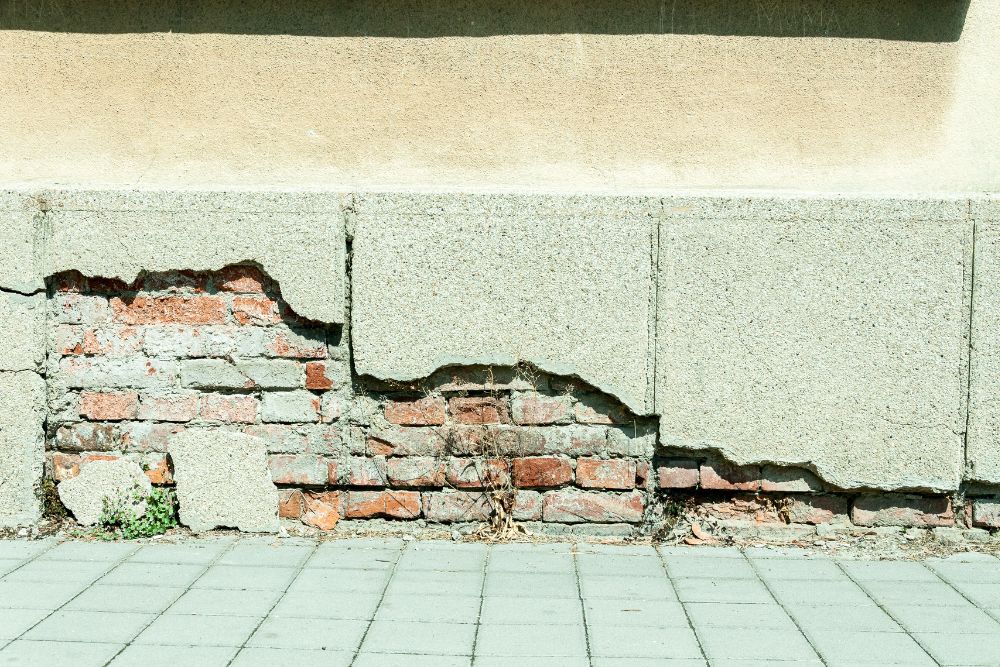
If you come across shoddy building repairs resembling a poorly patched quilt under a previous insurance claim in Sydney, your next steps become crucial.
The implications of subpar fixes could be more than meets the eye, potentially affecting your property’s value and safety.
As you navigate this unsettling discovery, understanding how to address and rectify the situation effectively is paramount.
Let’s explore the strategic actions you can take to navigate this challenging scenario and safeguard your property investment.
Recognising Poor Building Repairs
If you frequently encounter uneven surfaces, mismatched materials, or recurring issues in your building, you may be recognising signs of poor building repairs. Evaluating workmanship is crucial in identifying subpar repairs. Look for cracks that reappear, paint that peels off, or structural problems that indicate shoddy work.
By observing water leaks, electrical malfunctions, or insulation issues, you can pinpoint inadequate repairs. Preventing future issues starts with recognising these telltale signs. Seek expert opinions or inspections to assess the quality of previous repair work and uncover potential defects.
Addressing these issues promptly can save you from costly repairs down the line.
Documenting the Discovered Issues
After recognising signs of poor building repairs, the next crucial step is documenting the discovered issues effectively. Take clear photographs and videos of the poor repairs from various angles to collect evidence of the substandard work.
Maintain a detailed written record with dates and descriptions of the issues found under the previous insurance claim. Organise supporting documents like inspection reports and repair invoices securely to strengthen your case during claim assessment and dispute resolution.
Ensure that the documentation includes specific details and evidence of the poor building repairs for a comprehensive record. This documented information will be crucial in effectively communicating with the responsible parties and outlining your concerns for resolution.
Contacting the Responsible Party
To address the poor building repairs effectively, initiate contact with the responsible party without delay. Gather the contact information for the insurer or repairer linked to the inadequate repairs.
Clearly communicate the issues, providing specific details and evidence of the substandard work. Request a meeting or a written response from the responsible party to address the poor repairs promptly.
Document all interactions and correspondence with them regarding the inadequate building repairs. If necessary, escalate complaints if the responsible party fails to address or rectify the poor building repairs satisfactorily. Be prepared to seek reimbursement for the inadequate work and consider escalating complaints further if needed.
Seeking Legal Guidance
Consider consulting with a construction lawyer specialising in building defects in Sydney to gain clarity on your legal rights regarding the poor building repairs. Seeking expert advice is crucial in understanding your legal options when dealing with substandard repairs.
A construction lawyer can help you review the insurance claim and repair documents to evaluate the extent of the previous work done. They can also assess potential breaches of insurance policy terms or negligence in the repair process.
With their guidance, you can determine the best course of action, whether it involves negotiating with the insurer or pursuing legal recourse. Remember to document all communication and evidence related to the poor building repairs for potential legal proceedings.
Steps for Repair and Rectification
When addressing poor building repairs in Sydney, your first step towards rectification is to contact the original insurer responsible for the repairs and present evidence of the substandard workmanship or materials used.
Seek compensation by requesting a detailed scope of works for rectification before any repair work commences. If dissatisfied with the insurer’s response, escalate the complaint through their internal dispute resolution process.
In case the issue remains unresolved, consider lodging a complaint with the Financial Ombudsman Service (FOS).
Additionally, ensure the quality of the rectification by finding reputable contractors to redo the repairs using proper materials and skilled workmanship.
Conclusion
In conclusion, taking immediate action and following a structured approach is crucial when dealing with poor building repairs under a previous insurance claim in Sydney.
If you want to speak to a Sydney insurance builder for advice, contact us now on 0432 899 026 or email info@smrbuilders.com.au.